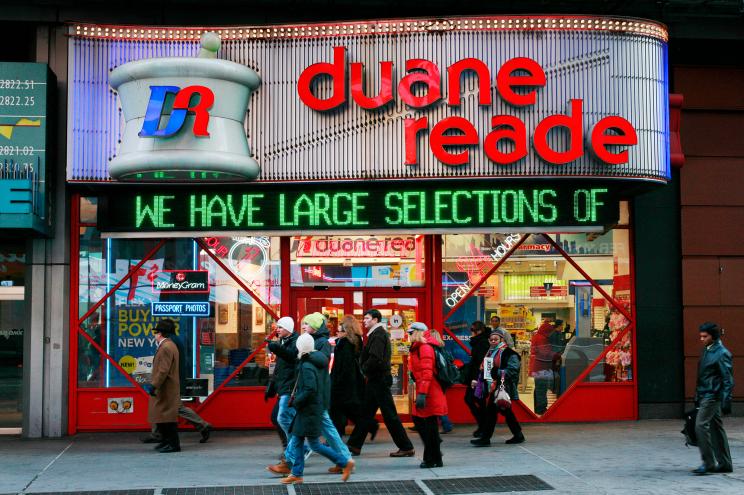New Yorkers who hated Duane Reade, the “drug store” chain that supposedly crushed friendly mom-and-pop merchants, are having second thoughts. Some Upper West Side residents are experiencing “feelings of inconvenience, concern and in some cases, nostalgia” over recent closures, according to Gothamist, which reported that Duane Reade locations in the five boroughs plummeted from 235 just 10 years ago to a mere 91 today.
Why does this sound familiar? Because it’s a predictable Big Apple syndrome. Hate anything new, especially if it smells of “gentrification,” “commercialization” or, worst of all, the “CH”-word — chains. But then, snuggle up with it once the benefits become clear. Hello, Whole Foods!
Duane Reade became so much a part of local lives that it’s easy to forget how vilified it was for years. Former Upper West Side City Councilwoman Gale Brewer, who’s now Manhattan borough president, even once led a crusade against her district’s “Duane Readeizing” and pushed through a storefront-size zoning change aimed at curbing their spread. But those who saw the devil flipped when the devil allowed them to purchase toilet paper at 1 a.m. Don’t go, guys! All’s forgiven.
My friends who deplored the 1980s Benetton explosion — there were once 25 in Manhattan alone — went bananas when they disappeared. They might have taken their cue from Joni Mitchell’s “Big Yellow Taxi” refrain, “You don’t know what you’ve got till it’s gone,” but unlike the song lyric, nobody paved paradise for a parking lot.
Or take Starbucks, another demonized neighborhood destroyer. It was long part of the woke drill to sneer at every opening of the coffee chain. Remember the bellyaching over a new one next to Tompkins Square Park in 2017? It was “the last straw” for the East Village, locals howled. Of course the java joint was immediately swarmed by hordes of East Villagers, and the neighborhood remains standing.
Last winter, a looming Starbucks shutdown at Columbus Avenue and West 76th Street prompted neighbors to mount a petition, signed by hundreds, begging the company to keep it open. The petitioners said they didn’t much like the brand — they were Upper West Side chain-haters, after all — but that theirs was somehow “different.”

The flip-flop’s the norm at sites much larger and more important than any drug store or coffee bar. There were years of political, architectural and “street” opposition to replacing the ruined and vacant Huntington Hartford art gallery at 2 Columbus Circle with a new home for the Museum of Arts and Design.
Egged on by the late Manhattan-based author Tom Wolfe, who worshipped the old monstrosity, locals united under various preservationist banners to block plans to redesign the building. But the museum prevailed and opened there in 2008. Does anyone miss the eyesore? The museum welcomes 250,000 visitors a year, most of them New Yorkers, and has tripled its membership.
What about Riverbank State Park, the 28-acre public playground above the Hudson River from West 137th to West 145th streets? So many Harlem residents and political activists hated the “racist” scheme to put a park on top of a theoretically smelly sewage-treatment plant that they delayed it for years and nearly blocked it altogether with lawsuits.
The park finally opened in 1993. It drew 3.62 million visitors in 2018, or 11.25 percent more than the year before. The Harlem Times Web site this year called it “a wonder of the neighborhood.”
New York is about change — not only on the streets, but our tastes and perceptions, too. Many who first hated the Twin Towers came to cherish them well before 9/11. Mourning lost “icons” — from pharmacies to skyscrapers — shouldn’t require that we dread and loathe whatever follows them. The only thing to fear about Duane Reade is the likelihood that many closed locations won’t be filled with anything in the near future. It won’t be easy to fill scores of abandoned spaces of up to 8,000 square feet during a miserable bricks-and-mortar retail market.
The favorite object of scorn for some cranky New Yorkers today is of course Hudson Yards.
“New Yorkers have expressed their dismay at the fact that this gargantuan project feels so alienating, so wasteful, so clearly not for them,” Web Urbanist put it. But if it ever faced the wrecking ball, I’d count on my fellow citizens to stand up and fight to save it.

